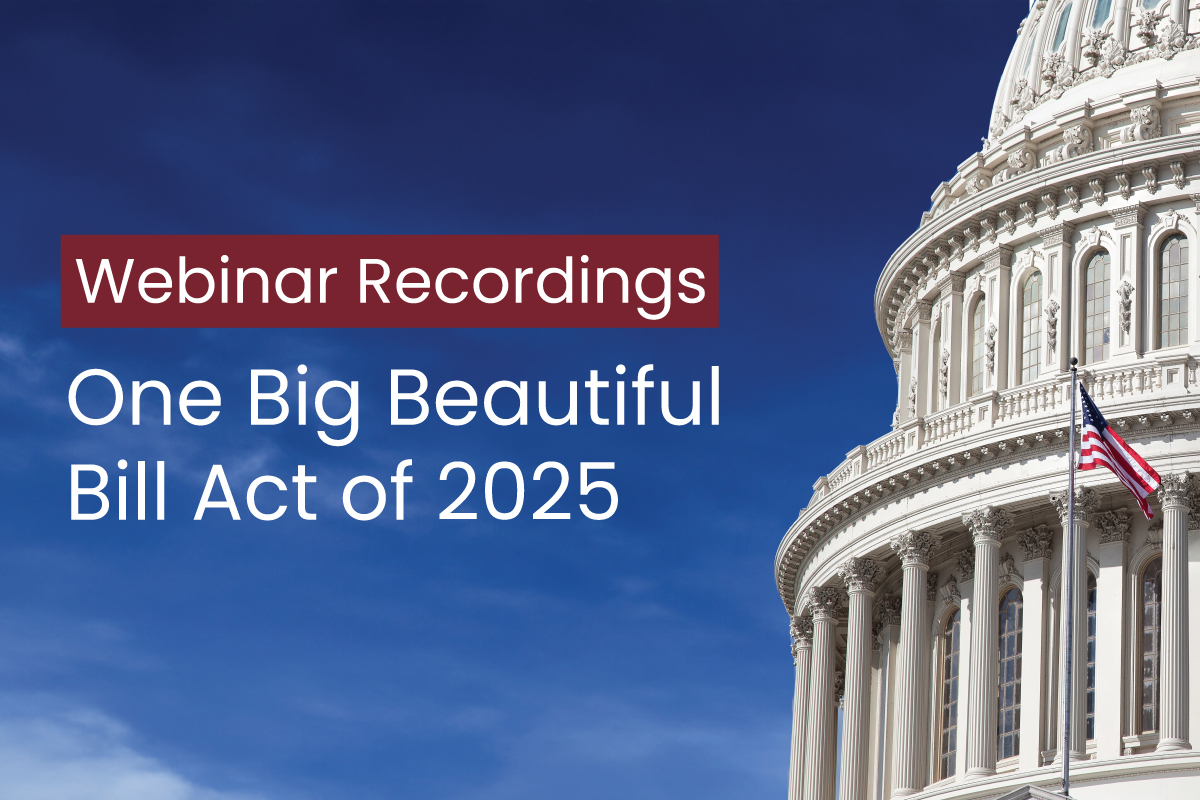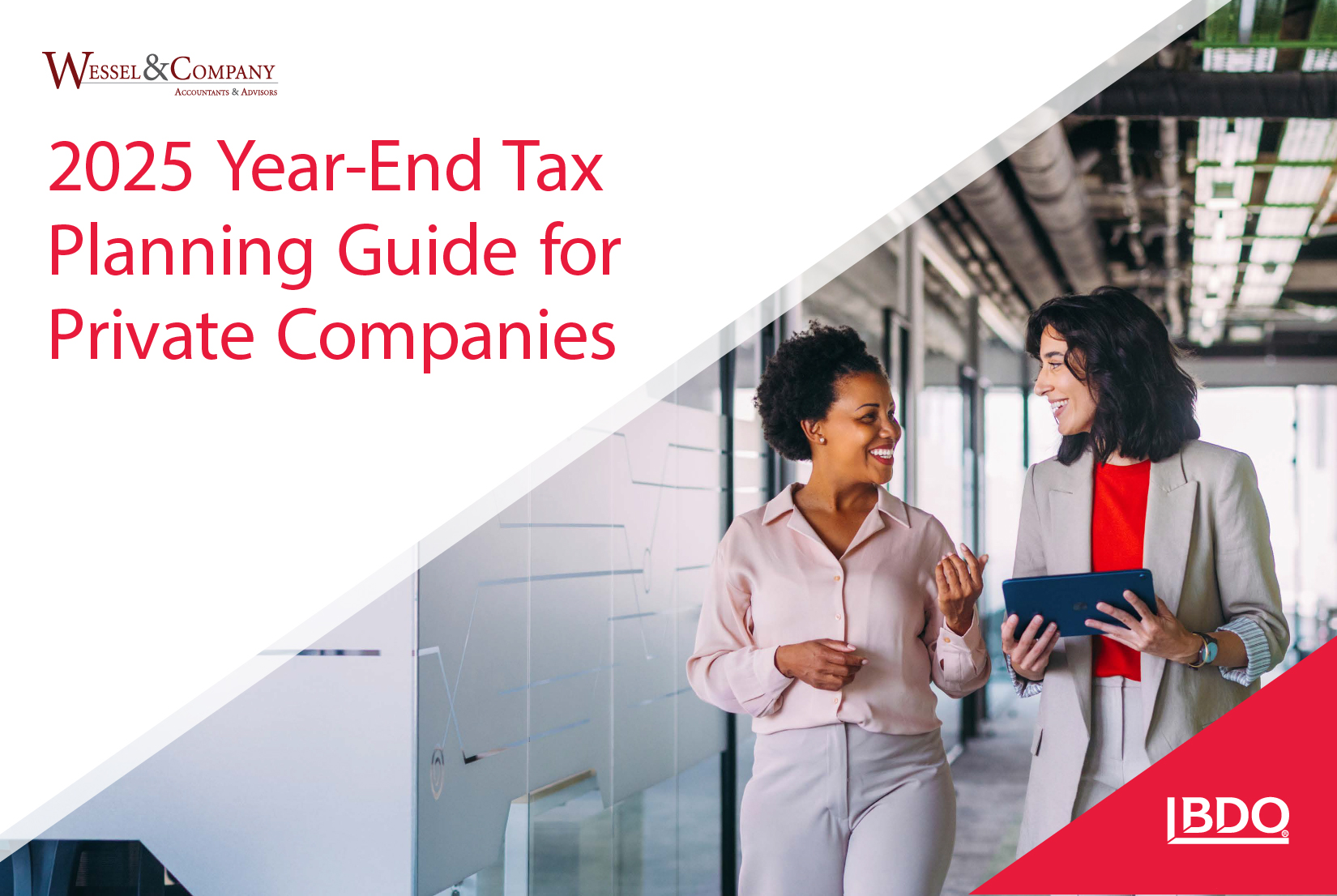Top Highlights Under The New Law
The One Big Beautiful Bill Act of 2025 (OBBBA) was signed into law on the July 4th holiday. This sweeping legislation locks in several tax cuts from the 2017 TCJA and introduces a host of new provisions designed to benefit both individuals and businesses. Below is a high-level overview of the most relevant changes:
For Individuals
- Tax Rates: Top rate of 37% is now permanent
- Estate Exemption: Lifetime exemption set at $15 million per person, indexed for inflation
- Child Tax Credit: Locked in at $2,200 per child, adjusted annually
- Standard Deduction: Made permanent; personal exemptions eliminated (temporary $6,000 exemption for seniors through 2028)
- Charitable Contributions:
- Above-the-line deduction restored: $2,000 (joint), $1,000 (single)
- New minimum floor: 0.5% for individuals, 1% for corporations
- SALT Deduction Cap:
- Increased to $40,000 through 2029
- Reverts to $10,000 afterward, with income-based phaseouts
- PTET strategies remain available
- Mortgage Interest: Deduction capped at $750K; now includes mortgage insurance premiums
- Misc. Deductions: Eliminated; new deduction allowed for educator expenses
- New Deductions:
- Tip Income: Up to $25,000
- Car Loan Interest: Up to $10,000 for new U.S.-assembled vehicles (2025–2028)
- Social Security: Seniors earning under $75K (individual) or $150K (joint) get a $6,000 deduction (2025–2028)
For Businesses
- QBI Deduction:
- Made permanent
- Higher phaseout thresholds
- New $400 minimum deduction for active income over $1,000
- Bonus Depreciation:
- 100% expensing made permanent for qualified property acquired after 1/19/2025
- Section 179 Expensing:
- Deduction limit increased to $2.5M
- Phaseout begins at $4M (both indexed for inflation)
- Interest Expense Deductions:
- Retroactively switches from EBIT to EBIDA, allowing greater deductions
- Excess Business Losses:
- Limitation made permanent; indexed from 2024
- Qualified Small Business Stock (QSBS):
- New tiered capital gains exclusion (50% after 3 years, 75% after 4, 100% after 5)
- Cap increased to $15M; asset threshold raised to $75M
- R&D Expensing:
- Permanently allows 100% expensing of Qualified Research Expenses (QREs), eliminating the need to amortize over 5 years (6 with convention).
- Taxpayers who amortized R&D in 2022, 2023, or 2024 may:
- Deduct the remaining unamortized portion in 2025, or
- Elect to deduct over 2025 and 2026.
- Small businesses (gross receipts < $31 million) may amend prior returns to claim missed QRE deductions.
- New Depreciation Rule:
- 100% expensing for part of non-residential real estate used in manufacturing or refining
Other Changes
- 1099 Reporting: Threshold raised from $600 to $2,000
- Small Manufacturer Threshold: Increased from $31M to $80M in average annual receipts
- Opportunity Zones:
- New rolling 10-year deferral window (2027–2033)
- Rural OZ enhancements
- Allows ordinary income investments
- 529 Plans Expanded:
- K–12 annual limit raised to $20,000
- Broader coverage for credentialing expenses
- New School Tax Credit:
- $1,700 individual credit ($3,400 joint) for donations to state-based scholarship organizations
If you’d like to discuss how these changes impact your planning or strategy, we’re happy to help. You can contact us at (814) 536-7864 or visit www.wesselcpa.com to connect with our team.





